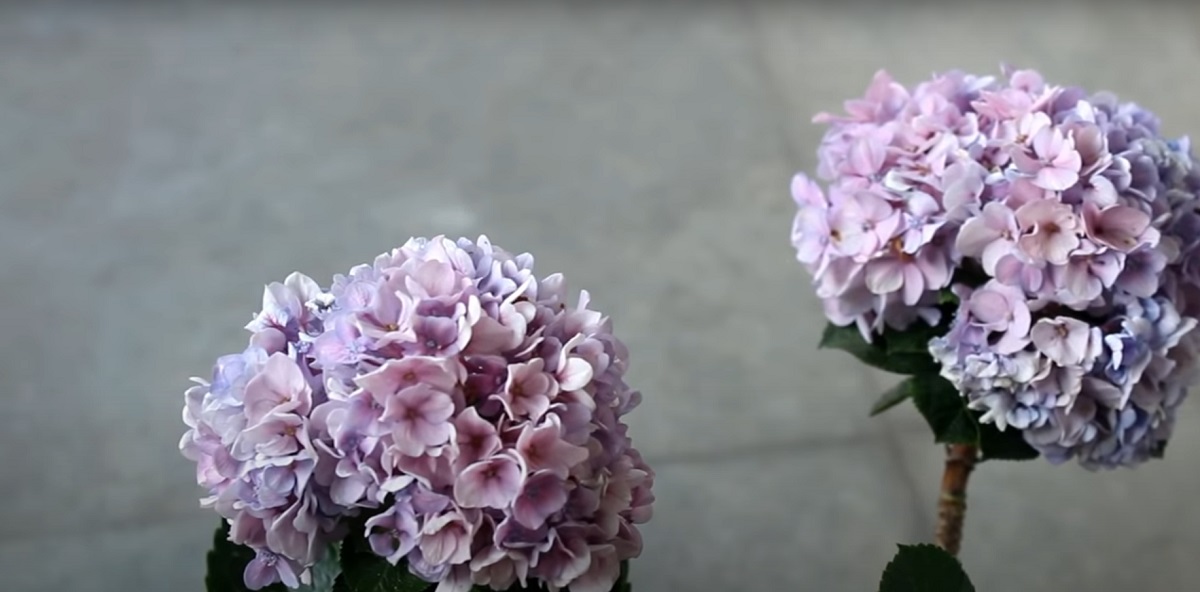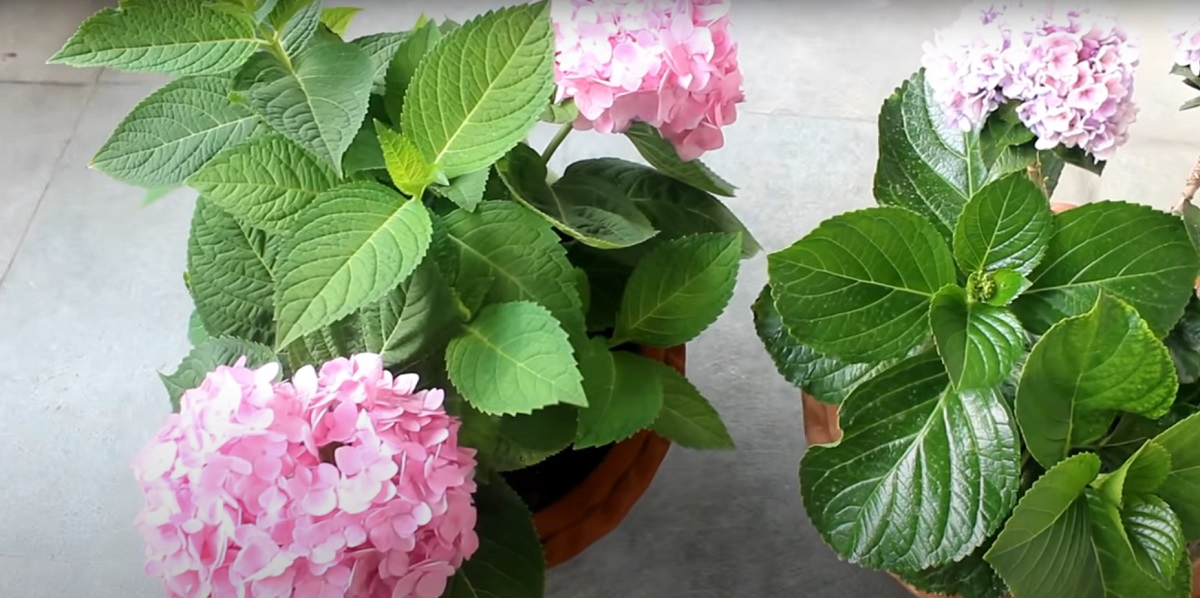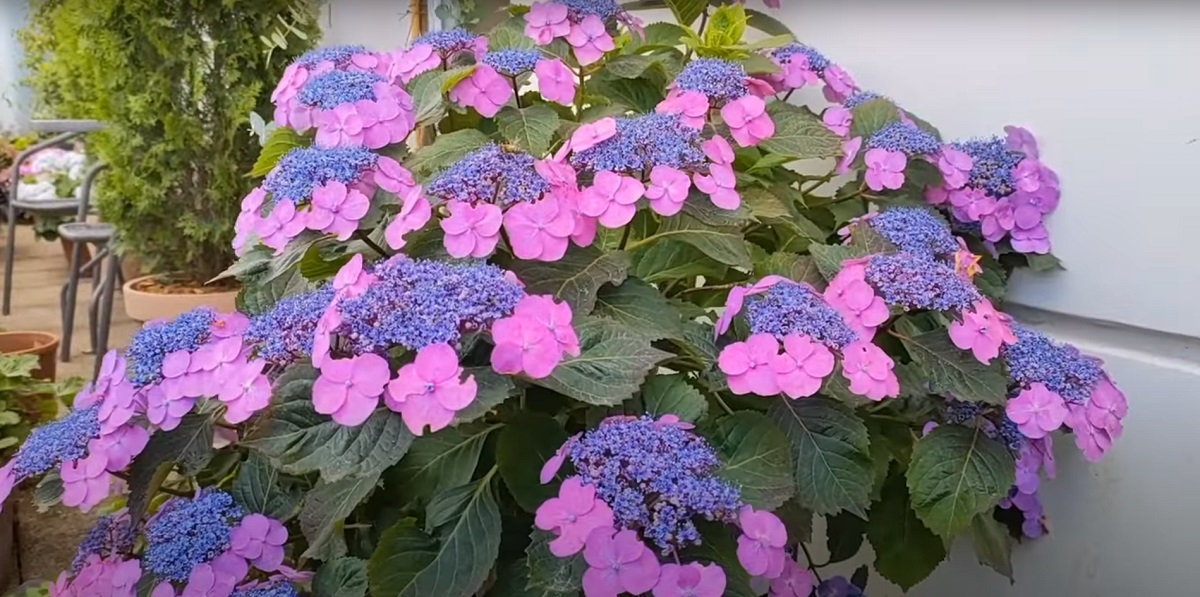What direction do hydrangeas grow best?
introduction
Hydrangea flower (Hydrangea) with the scientific name Hydrangea macrophylla belongs to the Hydrangeaceae family and the Comales order and is native to Japan.
Of course, there are about 70-75 flowering plants in the genus of this plant, Hydrangea, which are native to Southeast and East Asian countries as well as the Americas.
Most of the plants of this genus that are used in the world of flowers and ornamental plants are about 1-3 meters high, but among them, some plants look like small trees.

In the following, we will mention the factors that this plant needs to grow better
Irrigation: Hydrangea generally likes moist soil, and drying out leads to its destruction. Therefore, watering and maintaining its humidity should be done regularly. Excessive watering also leads to the loss of roots yellowing of leaves and even the loss of plants.
Light: Hydrangeas not only need a bright and bright place, but they should also benefit from direct sunlight for at least 3-4 hours a day.
The lack of light leads to the plant, not flowering, flowers falling, not opening all the petals on a bouquet, pale leaves, and long branches. On the other hand, too much direct sunlight will burn leaves and buds.
Therefore, it is better to provide direct light during the morning, when the intensity of the sunlight is milder, and to use canopies for the plant, or to place the plant in a place that will be in the shade from noon onwards.
Of course, The arrival of autumn and the decrease in air temperature should increase the amount of direct sunlight to this plant.
Temperature: Hydrangea is like an almost cool environment, and the growth of its flowers is not favorable at a temperature higher than 22 degrees.
That is, suppose that your plant has an inflorescence full of buds. In cool weather, all these buds bloom and turn into flowers, but in hotter temperatures and more than 22 degrees, the blooming rate of the buds decreases.
Therefore, it is better to keep this plant at a daily temperature of 18-22 degrees Celsius and a maximum of 24 degrees Celsius and at night at a temperature of 13-15.5 degrees Celsius during the growing season.
What direction do hydrangeas grow best?
The best temperature for the blooming of the buds and the durability of the flowers of this plant is about 16 degrees Celsius.
If the air temperature reaches more than 26.5 degrees, the plant should be kept in a place that has shade in the afternoon.
A decrease in cold in mid-autumn (for specimens that are kept outdoors) can lead to the browning of flowers and leaves and the falling of flowers.
Note that greenhouse hydrangea plants that are covered in flowers are very sensitive to cold, and if you buy them in the middle of the cold season, never leave them in a place where the cold air bothers them. Of course, in this condition, the plant does not die, but the leaves and flowers turn brown.
The cold requirement of this plant for flowering: As we know, hydrangea plants are native to North America and West Asia where there is cold in winter.
Hydrangea plants need autumn cold to start their annual stagnation, which is triggered when the temperature reaches below 4.5 degrees.
Of course, according to some breeders, the cold requirement of many hybrid and common types of this plant can be met with a temperature of 10-13 degrees Celsius.
Some other growers also keep the plant at a temperature of 18 degrees for six weeks to form the buds and then keep the plant at a temperature of 1-7 degrees for six weeks to grow these buds.
be completed After this, the plant is moved to a place with a temperature of about 18 degrees, and the flowers will bloom in about 80-85 days. Anyway, during the winter, in any position you keep the plant, pay attention to a few points:
It’s better if the temperature near the plant doesn’t go below -15 degrees. Make sure to shield the plant from cold winds and winter damage.
If the buds start to grow, move the plant to a place with a temperature of 12-15 degrees to protect them from the cold air. Once the risk of cold damage is gone, you can move the plant back outside.
Soil: The hydrangea plant likes soil that is not too wet and has a little bit of water in it. The soil should have an acidity level of about 6.
Altering the pH levels of the soil can have an impact on the hue of the flowers of this particular plant.
The application of fertilizers to these plants may present challenges, particularly if we intend to manipulate their color using fertilizers.
Including leaf soil in the plant’s soil mix is the most effective approach, as organic matter enhances the plant’s growth.
Hydrangea care tips
Although hydrangea leaves and flowers look delicate, they don’t require much care. These tips provide everything you need to know about how to care for hydrangeas.
Deeply hydrate and maintain the moisture of your plants by utilizing a sprinkler hose. To make the roots stronger, water them three times every week.
While big-leaf and flat-leaf hydrangeas need additional water, all hydrangeas thrive when they are consistently provided with moisture.3) Utilize a sprinkler hose as a means to deeply water your plants and prevent dehydration.
By watering your hydrangea in the morning, you can prevent it from wilting during the hotter parts of the day.
Adding fertilizer to hydrangeas depends on the type of hydrangeas because each type of hydrangeas needs a specific fertilizer and each type has different needs and uses different timings. The best way to determine fertility needs is to use Soil testing.
Large leaf hydrangeas need several light fertilizers in March, May, and June.
Oak leaf hydrangea and cluster leaf hydrangea perform best in April and June.
Flat-leaf hydrangeas only need to be fertilized once in late winter.
Protect your plants from bugs and illnesses by selecting varieties that have built-in resistance. Hydrangeas can get leaf spot, bush spot, wilt, and powdery mildew.
Bugs are not usually found in hydrangeas, but they can show up when the plants are not feeling well. Some bugs that could be a problem are aphids and red spider mites. Taking good care of hydrangea plants is the best way to prevent diseases.
conculsion
The hydrangea plant is very popular with the public due to its easy maintenance and low expectations for self-protection, and it is considered one of the most popular houseplants.
We hope that the information mentioned in this article has been of interest to you in order to know more about this beautiful flower.














